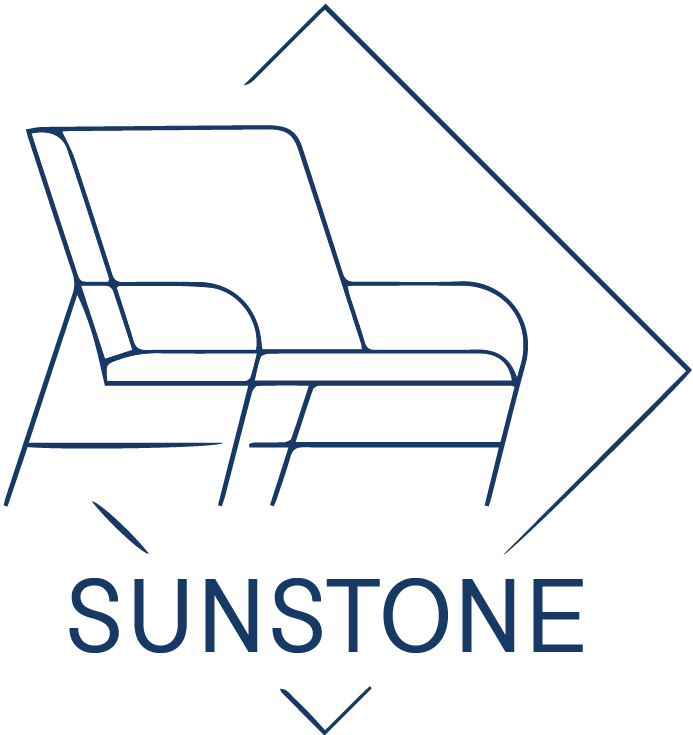How To Group Different Shaped Outdoor Tables
Designing an outdoor space involves more than choosing individual pieces of furniture. True comfort and functionality come from how those pieces work together. When mixing different shapes of Outdoor Tables—round, square, rectangular, or even oval—the goal is to create a cohesive layout that feels both practical and visually balanced.
At Sunstone Outdoor, our modular furniture systems and variety of outdoor table designs make it easy to coordinate shapes, sizes, and materials. Whether you are arranging a private patio, a poolside lounge, or a restaurant terrace, understanding how to group tables effectively will help you maximize space and style.
Table of Contents
1. Understand the Purpose of Each Table
Before arranging tables, identify what each will be used for. A rectangular dining table serves a very different purpose from a small round side table or a square coffee table.
Dining Tables – Main gathering spaces for meals and group interaction.
Bar or counter tables – Ideal for drinks, quick conversations, or standing areas.
Coffee and Accent Tables – Serve relaxation zones near lounge chairs or sofas.
Fire Pit Tables – Create warmth and visual focus in social spaces.
When you define function first, it becomes easier to select complementary shapes and organize them logically.
2. Balance Shapes and Proportions
Each table shape influences flow and perception in an outdoor layout.
Round tables encourage movement and conversation. They soften sharp lines in a space and are perfect for compact areas.
Rectangular tables establish structure and direction. They suit larger patios, dining zones, or linear layouts.
Square tables provide symmetry and versatility, often used in corner settings or small terraces.
Oval or irregular tables introduce organic movement and work beautifully in garden settings.
When grouping different shapes, balance is key. For example, pair a rectangular dining table with round side tables nearby to soften geometry, or use square accent tables alongside curved seating to anchor the layout.
3. Maintain Clear Visual Flow
Outdoor areas should feel open and connected. To achieve visual harmony when mixing shapes:
Keep consistent spacing—at least 60–90 cm between tables or seating for easy movement.
Align one or two dominant shapes (such as rectangular dining and matching benches) and use other shapes as accents.
Ensure height consistency within similar zones; varying heights too drastically can make the layout feel uneven.
Group tables by function—dining, lounge, or bar—to create organized clusters that visually guide guests through the space.
4. Coordinate Materials and Finishes
Even when table shapes differ, unified materials can tie the space together. For instance, combining aluminum dining tables with aluminum-framed coffee tables maintains a consistent tone, even if one is rectangular and the other round.
Sunstone Outdoor Tables use high-grade aluminum, tempered glass, and powder-coated finishes, allowing different shapes to coordinate effortlessly. You can mix a rectangular dining table with circular Bar Tables or accent pieces while maintaining a harmonious look through shared finish and texture.
If you prefer contrast, use materials strategically—such as pairing a brushed metal dining table with a darker iron fire-pit table to introduce visual depth without breaking cohesion.
5. Create Functional Zones
Grouping tables by activity helps define distinct areas within an outdoor space:
Dining Zone: A rectangular or oval table with matching chairs for meals.
Lounge Zone: A low, square or round coffee table near sofas or sectionals.
Entertainment Zone: A bar-height table or fire-pit table for evening gatherings.
Use rugs, lighting, or planters to separate these zones subtly while maintaining continuity in overall design. This approach makes the space feel intentional rather than cluttered.
6. Examples of Effective Combinations
Rectangular Dining + Round Side Tables – Adds softness and better accessibility for guests.
Square Coffee + Oval Fire Pit Table – Balances structure and organic flow.
Round Bar Table + Rectangular Console Table – Works well for resort terraces or rooftop lounges.
Modular Sunstone Table Sets – Designed to combine multiple shapes with consistent finishes for seamless layouts.
7. Practical Tips for Cohesive Arrangement
Keep the centerline aligned when placing tables of different shapes in one zone.
Repeat at least one common design element—color, leg style, or surface material—to create visual rhythm.
Use symmetry in large patios, but allow asymmetry in more natural, garden-style settings for a relaxed feel.
Always consider movement paths; guests should move comfortably between areas without obstruction.
Conclusion
Grouping outdoor tables of different shapes is an opportunity to express creativity while maintaining functional design. The key lies in balancing proportion, material, and visual flow. By mixing round, square, and rectangular tables thoughtfully, you can transform any patio or garden into a dynamic and inviting environment.
Sunstone Outdoor offers a comprehensive range of modular outdoor tables—from rectangular dining options to round bar and fire-pit tables—engineered with durable aluminum and weather-resistant finishes. Our designs allow you to mix and match shapes confidently while achieving a unified, elegant outdoor setting.
Previous: How To Make Outdoor Tables

